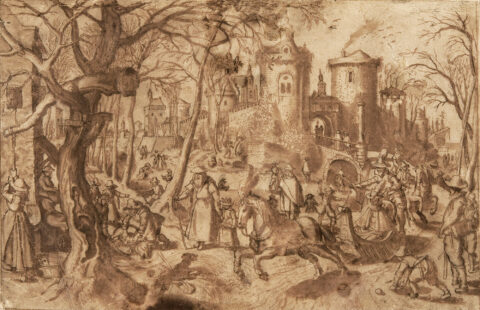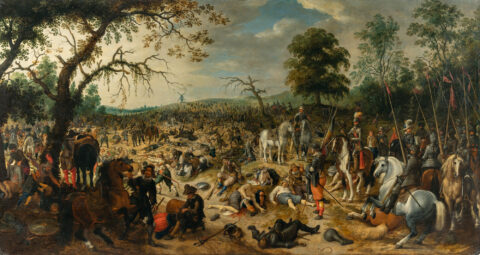Sebastian Vrancx
Karel van Mander mentions Sebastian Vrancx as a pupil of Adam van Noort in Antwerp, who was also a teacher of Rubens, Jordaens and other painters. It is assumed that Vrancx then went to Italy around 1597; in 1600 he can be proven to have returned to Antwerp and became master of the Guild of St Luke, of which he became co-dean in 1611 and senior dean in 1612. Closely connected with the Guild of St Luke is the Chamber of Rhetoricians of the “Violiers”, to which Vrancx was admitted in 1607; he was active there as the author of about 13 comedies and some poems. His social position was also underpinned by his membership of the elitist brotherhood of the Romanists from 1610 and of the civic militia from 1613, of which he was captain from 1621-1631.
Vrancx quickly made a name for himself as a painter of small-scale society pieces, folk scenes and fairs, but also of landscapes with Roman ruins. He became particularly famous for his battle paintings, with which he established the Flemish military genre. With his depictions of cavalry battles, raids on convoys or plundering of villages, he depicts an everyday reality, for the 17th century in Flanders was marked by prolonged armed conflicts. However, Vrancx does not document historical events, but depicts exemplary military situations that enjoy great popularity among collectors.



